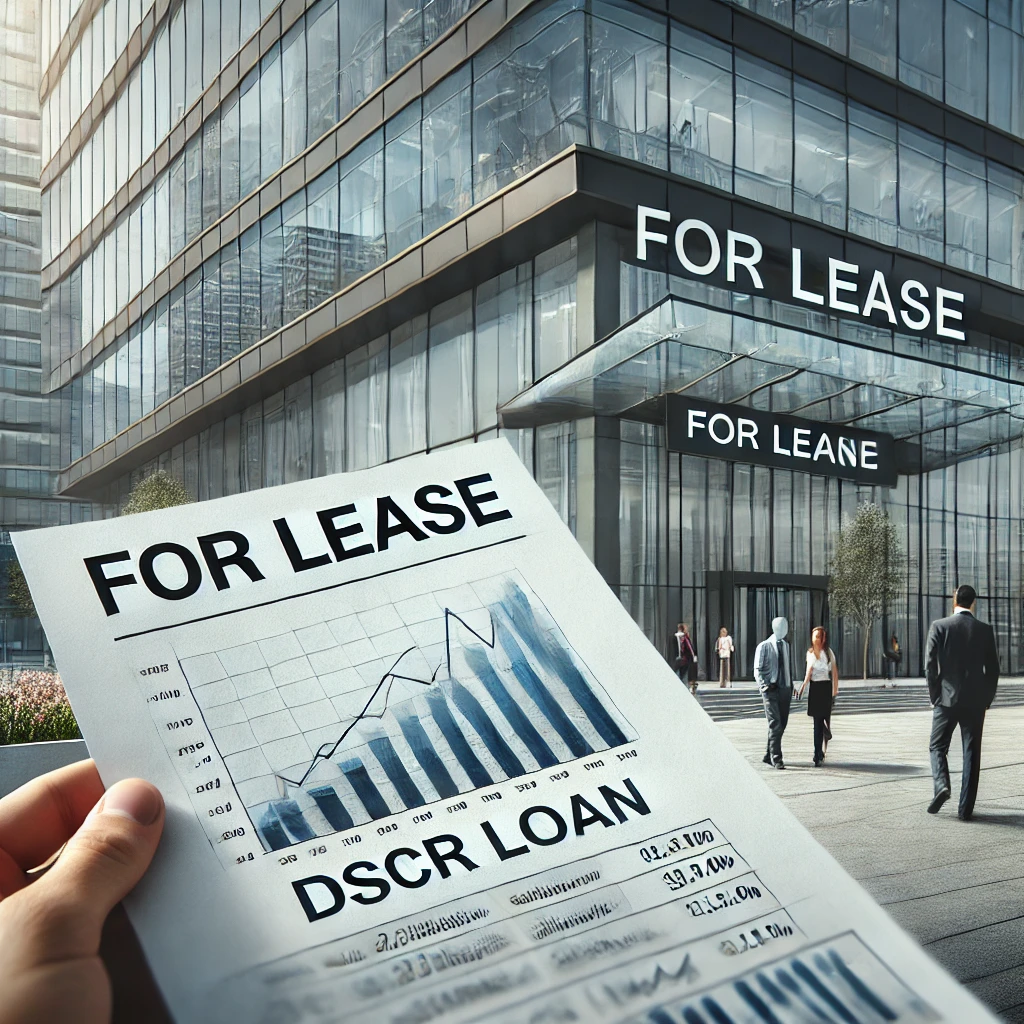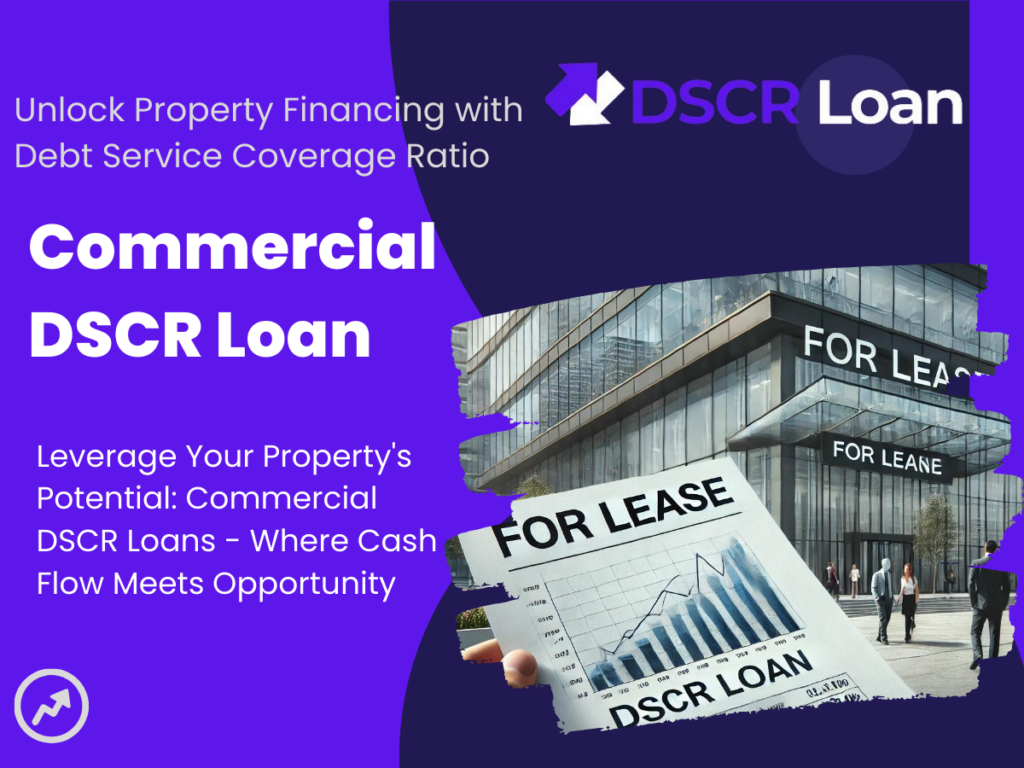Commercial DSCR loans focus on a property’s income potential to cover debt obligations, making them ideal for real estate investors and business owners. They offer easier qualification, potentially lower interest rates, and scalability for growing portfolios. Learn how to calculate DSCR, understand loan terms, and maximize property performance.
Commercial DSCR Loan: The Ultimate Guide to Debt Service Coverage Ratio Financing
Are you a real estate investor looking to expand your commercial property portfolio? Or perhaps you’re a business owner seeking financing for your next big venture? If so, you’ve likely come across the term “Commercial DSCR Loan.” But what exactly is it, and how can it benefit you? In this comprehensive guide, we’ll dive deep into the world of commercial DSCR loans, exploring everything from their basic definition to advanced strategies for securing the best rates.
What Is a Commercial DSCR Loan?

Let’s start with the basics. DSCR stands for Debt Service Coverage Ratio, a crucial metric in commercial real estate financing. A commercial DSCR loan is a type of financing where lenders evaluate the property’s ability to generate enough income to cover its debt obligations.
Understanding DSCR
Before we go further, it’s essential to understand what DSCR means:
- DSCR = Net Operating Income (NOI) / Total Debt Service
- Net Operating Income is the annual income generated by the property after deducting operating expenses
- Total Debt Service includes principal and interest payments on all loans
A DSCR of 1.0 means the property’s income exactly covers its debt obligations. Lenders typically look for a DSCR of 1.25 or higher, indicating a healthy cushion for debt repayment.
Why Choose a Commercial DSCR Loan?
Commercial DSCR loans offer several advantages for real estate investors and business owners:
- Focus on Property Performance: Unlike traditional loans that heavily weigh personal income, DSCR loans prioritize the property’s income-generating potential.
- Easier Qualification: For investors with multiple properties or complex tax situations, DSCR loans can simplify the approval process.
- Potentially Lower Interest Rates: Properties with strong DSCRs may qualify for more favorable terms.
- Scalability: As your portfolio grows, DSCR loans can make it easier to finance additional properties.
Types of Commercial DSCR Loans
Commercial DSCR loans come in various forms to suit different needs:
| Type of DSCR Loan | Description |
|---|---|
| 1. Multifamily DSCR Loans | These loans are used to finance properties with multiple residential units, such as apartment buildings, helping investors manage and grow their rental property portfolio. |
| 2. Mixed-Use Property DSCR Loans | These loans finance properties that have a combination of residential and commercial spaces, allowing for diverse income streams from a single investment. |
| 3. Office Building DSCR Loans | These loans are tailored for financing office buildings, providing the necessary funds to acquire or refinance properties used for business operations and office space. |
| 4. Retail DSCR Loans | These loans are designed for financing retail properties, including shopping centers, standalone stores, and other commercial spaces intended for retail businesses. |
| 5. Industrial DSCR Loans | These loans are used to finance industrial properties, such as warehouses, manufacturing facilities, and distribution centers, supporting the needs of industrial businesses. |
1. Multifamily DSCR Loans
Ideal for apartment buildings and other multi-unit residential properties. These loans often have competitive rates due to the stable income stream from multiple tenants.
2. Mixed-Use Property DSCR Loans
For properties combining residential and commercial spaces, such as a building with ground-floor retail and upper-floor apartments.
3. Office Building DSCR Loans
Tailored for office spaces, considering factors like tenant quality and lease terms.
4. Retail DSCR Loans
Designed for shopping centers, strip malls, and other retail properties, taking into account factors like anchor tenants and foot traffic.
5. Industrial DSCR Loans
For warehouses, distribution centers, and manufacturing facilities, often with longer loan terms due to the specialized nature of these properties.
How to Qualify for a Commercial DSCR Loan
Securing a commercial DSCR loan involves meeting certain criteria:
- Minimum DSCR: Most lenders require a DSCR of at least 1.25, though this can vary based on property type and market conditions.
- Property Value: The loan-to-value (LTV) ratio typically needs to be 75% or lower.
- Credit Score: While less important than in traditional loans, a good credit score (usually 660+) is still beneficial.
- Down Payment: Expect to put down 20-25% of the property’s value.
- Property Type and Condition: The property should be in good condition and fall within the lender’s accepted categories.
- Experience: Some lenders may require previous experience in managing similar properties.
Calculating DSCR: A Step-by-Step Guide
Understanding how to calculate DSCR is crucial for any commercial real estate investor. Let’s break it down:
- Calculate Net Operating Income (NOI):
- Start with Gross Rental Income
- Subtract Vacancy and Credit Losses
- Subtract Operating Expenses (excluding debt service)
- The result is your NOI
- Determine Annual Debt Service:
- Calculate total annual payments for all loans on the property
- Apply the DSCR Formula:
- DSCR = NOI / Annual Debt Service
For example, if a property has an NOI of $100,000 and an annual debt service of $75,000, the DSCR would be:
DSCR = $100,000 / $75,000 = 1.33
This DSCR of 1.33 indicates that the property generates 33% more income than needed to cover its debt obligations, which is generally considered favorable by lenders.
Commercial DSCR Loan Rates and Terms
| Loan Term (Years) | Interest Rate (%) | LTV Ratio | DSCR |
|---|---|---|---|
| 3 Years | 6.25% | 65% | 1.2 |
| 5 Years | 6.5% | 70% | 1.3 |
| 7 Years | 6.75% | 75% | 1.4 |
| 10 Years | 7.0% | 80% | 1.5 |
The rates and terms for commercial DSCR loans can vary widely based on several factors:
Factors Affecting Rates:
- Property type and location
- Loan amount and LTV ratio
- Borrower’s credit score and experience
- Overall market conditions
Typical Terms:
- Interest rates: Usually 0.5% to 2% higher than conventional commercial mortgages
- Loan terms: 5-30 years, with 5-10 year terms being most common
- Amortization: Often 25-30 years
- Prepayment penalties: May apply, especially for lower-rate loans
It’s important to shop around and compare offers from multiple lenders to find the best terms for your specific situation.
Pros and Cons of Commercial DSCR Loans
Like any financing option, commercial DSCR loans have their advantages and disadvantages:
Pros:
- Easier qualification for investors with complex financials
- Focus on property performance rather than personal income
- Potential for larger loan amounts
- Streamlined approval process
Cons:
- Potentially higher interest rates compared to conventional loans
- Stricter requirements for property performance
- May require larger down payments
- Less flexibility in loan terms
Maximizing Your DSCR for Better Loan Terms
Improving your property’s DSCR can lead to better loan terms and easier approval. Here are some strategies:
- Increase Rental Income: Consider raising rents if market conditions allow, or find ways to add value to justify higher rents.
- Reduce Operating Expenses: Look for areas to cut costs without sacrificing property quality or tenant satisfaction.
- Improve Occupancy: Implement effective marketing strategies to reduce vacancy rates.
- Refinance Existing Debt: If possible, refinance high-interest debt to lower your overall debt service.
- Make Property Improvements: Strategic upgrades can increase property value and potential rental income.
Common Mistakes to Avoid with Commercial DSCR Loans
When pursuing a commercial DSCR loan, be wary of these pitfalls:
- Overestimating Income: Be realistic about potential rental income to avoid falling short on DSCR requirements.
- Underestimating Expenses: Account for all operating costs, including potential increases in property taxes or insurance.
- Ignoring Market Trends: Consider how economic shifts might affect your property’s performance and DSCR.
- Neglecting Due Diligence: Thoroughly research the property and market before committing to a loan.
- Overlooking Prepayment Penalties: Understand the terms of your loan, including any fees for early repayment.
The Future of Commercial DSCR Loans
As the commercial real estate landscape evolves, so too will DSCR loans. Here are some trends to watch:
- Technology Integration: Expect more lenders to use AI and big data to assess property performance and risk.
- Green Financing: Properties with energy-efficient features may qualify for better DSCR loan terms.
- Alternative Property Types: DSCR loans may become more common for niche property types like co-living spaces or self-storage facilities.
- Increased Competition: As more lenders enter the DSCR loan market, borrowers may benefit from more competitive terms.
Conclusion
Commercial DSCR loans offer a valuable financing option for real estate investors and business owners looking to expand their portfolios or acquire new properties. By focusing on the property’s ability to generate income, these loans can provide opportunities that might not be available through traditional financing methods.
While DSCR loans come with their own set of challenges and requirements, understanding the ins and outs of this financing option can help you make informed decisions and potentially secure better terms. As with any major financial decision, it’s crucial to do your due diligence, consult with financial professionals, and carefully consider your long-term goals before committing to a commercial DSCR loan.
Also Read: Mixed-Use DSCR Loans: What is it, Expert Advice & How to Apply
FAQs
What is the minimum DSCR required for a commercial loan?
Most lenders typically require a minimum DSCR of 1.25, although this can vary depending on the property type, location, and overall market conditions. Some lenders may accept a lower DSCR for strong borrowers or exceptional properties, while others might require a higher ratio for riskier investments.
How does a DSCR loan differ from a traditional commercial loan?
The primary difference is that DSCR loans focus on the property’s ability to generate income to cover debt payments, while traditional commercial loans often place more emphasis on the borrower’s personal income and credit history. DSCR loans can be easier to qualify for investors with multiple properties or complex tax situations.
Can I get a DSCR loan for a residential investment property?
While DSCR loans are primarily associated with commercial properties, some lenders do offer DSCR loans for residential investment properties, particularly for multi-family units or large portfolios of single-family rentals. These are sometimes referred to as “residential DSCR loans” or “investment property DSCR loans.”
How often is DSCR calculated during the loan term?
Lenders typically calculate DSCR annually as part of their loan monitoring process. However, some loan agreements may require more frequent calculations, especially for higher-risk properties or during times of economic uncertainty. It’s important to maintain a strong DSCR throughout the loan term to avoid potential default situations.
Are there any alternatives to DSCR loans for commercial property financing?
Yes, there are several alternatives to DSCR loans, including traditional commercial mortgages, SBA loans, bridge loans, and hard money loans. Each option has its own set of pros and cons, and the best choice depends on your specific situation, property type, and financial goals. It’s advisable to consult with a commercial mortgage broker or financial advisor to explore all available options.



